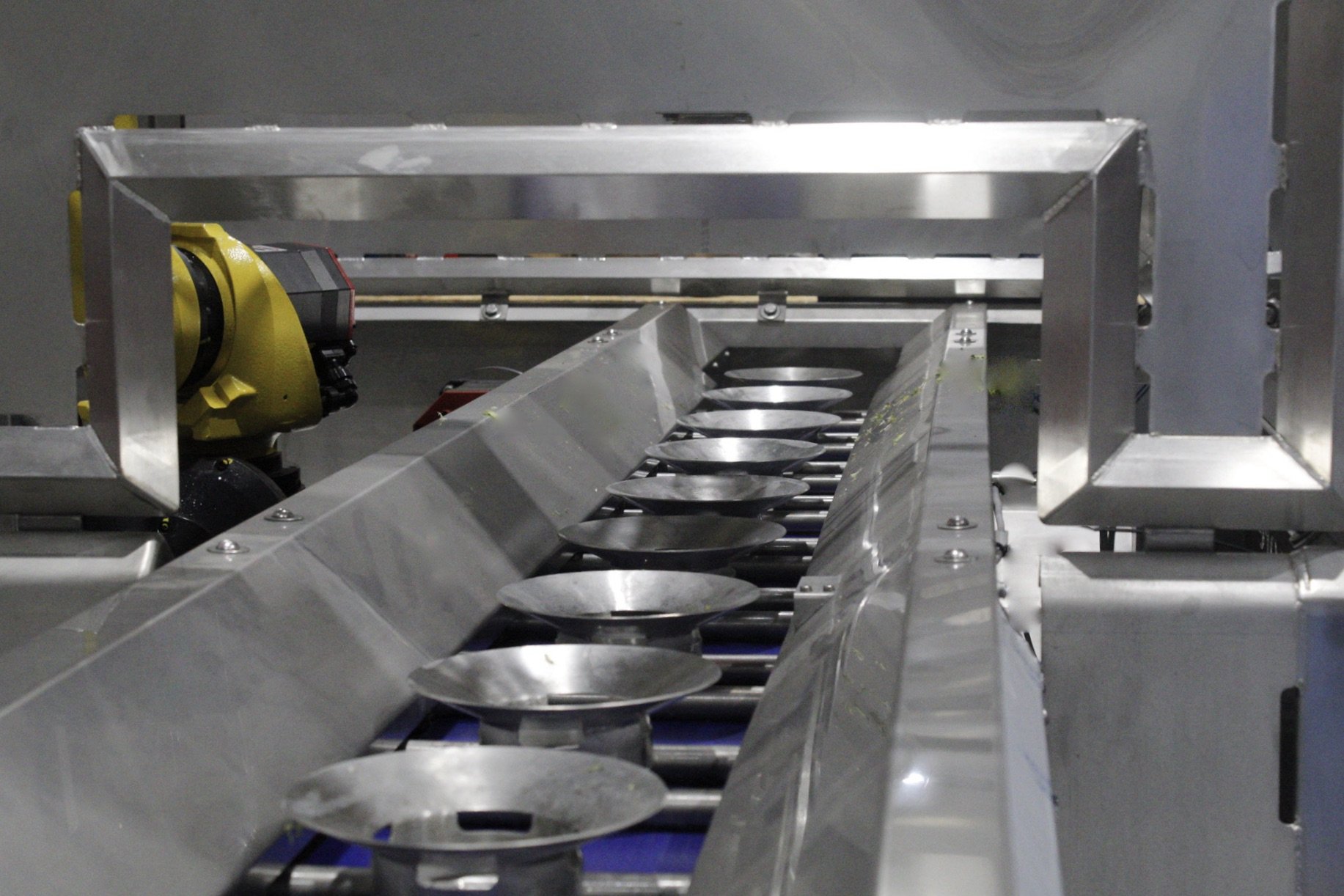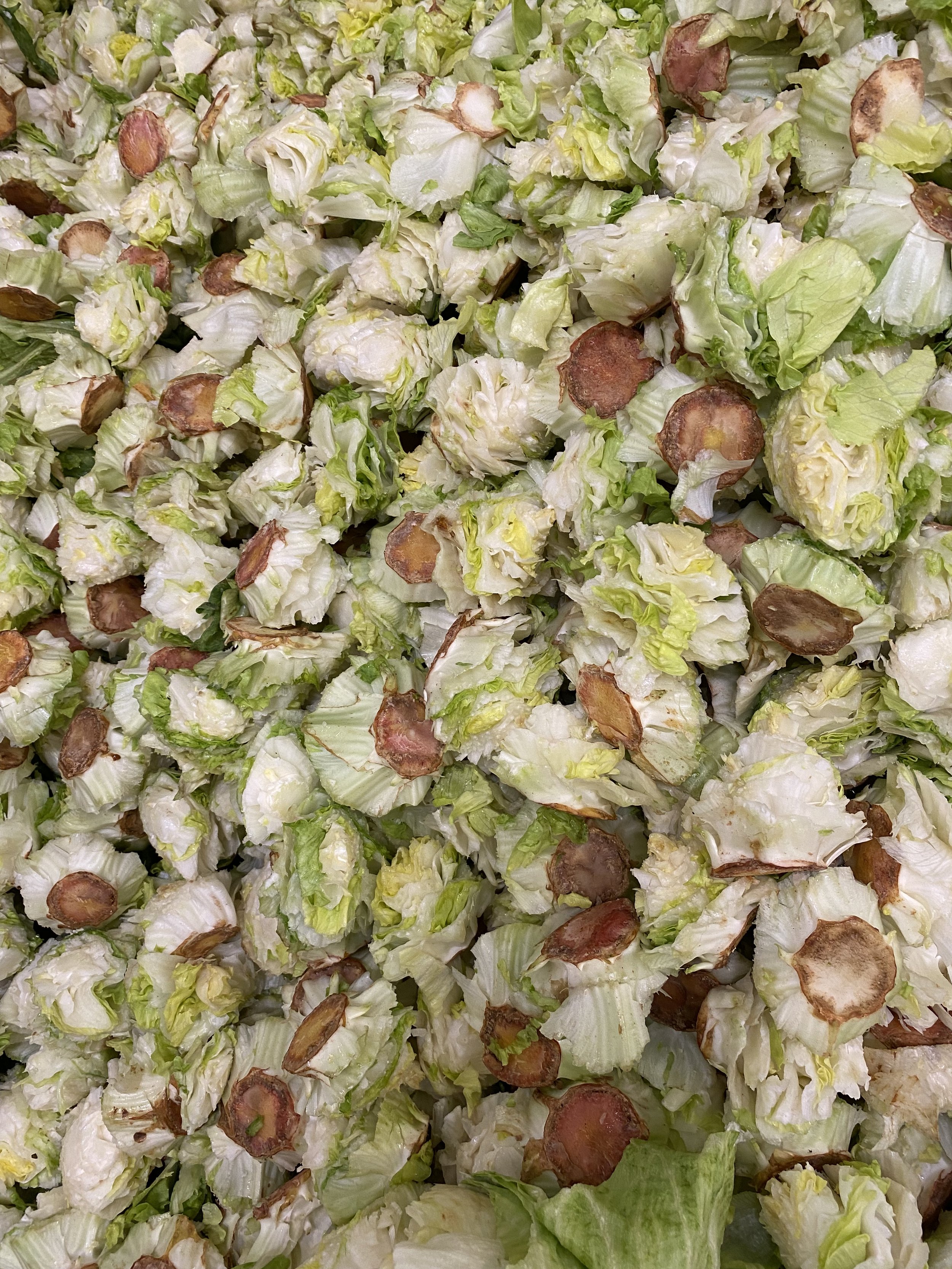Automation in Salad De-coring: A Guide for Salad Processors
For a large-scale salad processor, the move from hand labor to robotic automation in lettuce de-coring is the fast lane to increased efficiency, consistency, and safety in the production line.
We know that manual de-coring of lettuce is labor-intensive and that human error can lead to inconsistency, wasted product, and potential contamination. We know that automation brings uniformity, speed, and improved hygiene, ensuring that each lettuce head is perfectly de-cored, uniform and ready for further processing.
Why hesitate?
As you embark on this strategic move to either remain competitive, or keep your edge - consider how you can reap the full benefits of automation.
Higher efficiency
Superior product quality
Safer workplace
Areas to mitigate:
Labor Intensity: Hand labor is time-consuming, physically demanding and often leads to worker fatigue. Resulting in workforce unreliability and inconsistent product quality.
Labor Costs: Rising labor costs and the ongoing challenge of actually sourcing workers willing to perform repetitive tasks consistently, make automation a cost-effective prospect.
Quality Control: Worker fatigue can lead to variability in the de-coring process, impacting the overall yield of the product and creating a high % of food loss at the primary stage in post-harvest processing.
Food Safety: Reducing human contact with the produce or ‘touch points’ brings the risk of contamination down to a minimum level, enhancing all areas of food safety by default.
Key Components of a Robotic De-coring System
Robotics: The prime component of the automated system is the robot, equipped with precise end effectors and sensors to handle a delicate product without causing damage. Robots are designed and programmed to mimic human tasks, but with enhanced speed and accuracy - the robot can consistently de-core with surgical precision.
Vision System: Advanced vision systems assist the robot in identification of the target area. These systems use multiple optimally placed cameras and sophisticated image processing software to detect and locate the core with precision.
De-coring Tool: The end effector or de-coring tool attached to the robotic arm is designed to effectively remove the core without removing or damaging the surrounding leaves.
Conveyor System: A well-designed conveyor system is also crucial for transporting the lettuce heads to and from the cutting zone, ensuring a smooth flow of produce through the processing line.
Software and Control Systems: The software that controls the robotic system must be user-friendly, allowing operators to easily adjust the aspects of vision and de-coring parameters in real time. Specific algorithms enhance the system’s ability to learn different lettuce sizes and shapes rapidly.
Implementation:
Assessment and Planning: Begin by assessing your current de-coring process, identify current through-put rates / yield ratios and waste %, now compare this with typical ratios specific to automated de-coring. Outline a plan with objectives, scope, and budget for the project including ROI.
Choosing the Right Equipment: Select a robotic de-coring system that meets your specific needs. Consider factors such as your volume requirement of lettuce to be processed daily, the variability in lettuce sizes, and how this equipment will integrate with your existing lines after installation.
After installation and commissioning - Conduct a short running in period to train operators and evaluate the system’s performance before full-scale implementation.
It is prudent to maintain a scaled down hand line while any potential adjustments are being made. The automated cell can take over when the adjustments are complete, and the hand line can be either be removed, or maintained for speciality crops.
Training and Integration: Train your staff how to operate and maintain the new system correctly - the robot is friendly! With the correct in-feed / out-feed conveying systems integration into your existing production line should be seamless and operators will appreciate the smooth organisational flow of tasks.
Monitoring and Optimization: After implementation, data will be available via the HMI - Look at these yield ratios to identify which settings are relevant to your required outcome, from here you can make adjustments to optimize efficiency and effectiveness. Periodically monitor the system’s performance to ensure maximum yields are being achieved.
Areas Mitigated:
Consistency and Quality: Robots provide consistent de-coring, resulting in uniform product quality and reduced waste.
Cost Efficiency: Although the initial investment is significant, the reduction in labor costs and associated add on costs are outweighed by increased throughput / yield / waste reduction / waste transportation costs, all of these aspects result in noticeable savings and growth.
Scalability: Robotic systems can be easily scaled to match increased production demands without the need for proportional increases in labor. Multiple cells can be placed side by side utilising the same in-feed / out-feed equipment. Production targets can be rapidly met and increased accordingly.
Enhanced Safety: Automation reduces the risk of injuries associated with repetitive manual tasks, operators are less fatigued at the end of a shift. The robotic cell enhances worker productivity and improves overall workplace safety.
Transitioning to robotic de-coring in your salad processing operations is a strategic move in updating your production lines. By investing in technology and correctly planning the implementation, you can achieve high efficiency, improved product quality, and a safer working environment for your employees.





